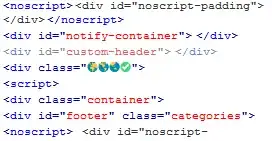In short: Firefox uses a font in which these symbols look the way they do.
These characters are a part of the Unicode Standard.
Unicode is a computing industry standard for the consistent encoding, representation, and handling of text expressed in most of the world's writing systems. Developed in conjunction with the Universal Coded Character Set (UCS) standard and published as The Unicode Standard, the latest version of Unicode contains a repertoire of more than 128,000 characters covering 135 modern and historic scripts, as well as multiple symbol sets. -Wikipedia
Thus, unlike ASCII (which had very few), Unicode contains several symbol sets. Now while it has been standardized on what code should represent what alphabet or symbol, Unicode does not exactly specify how the symbol should look like. Thus, all operating systems have their own sets of symbol graphics to look different. This may include some being colored and some being just outlines or black and white.
Also, it is also possible for fonts to have their own set of art for these symbols so that the characters can go with the feel of the application. Even inside the application, you may have different pages using different sets of images. Thus, you can interact with the character like you would otherwise, but it would just look different.
You can see how exactly emoji (for , skip to #1483) look on various platforms here.



